94
GRADUATES
1
SUMMA CUM LAUDE
1
MAGNA CUM LAUDE
6
CUM LAUDE
18
AGRICULTURE, VETERINARY & RANGELAND SCIENCES MAJORS
19
BIOCHEMISTRY & MOLECULAR
BIOLOGY MAJORS
48
NATURAL RESOURCES & ENVIRONMENTAL SCIENCE MAJORS
9
NUTRITION MAJORS
A founding college of the University, we have a long tradition of excellence in teaching, research and engagement programs that benefit the health and economic vitality of Nevada. We offer programs in:
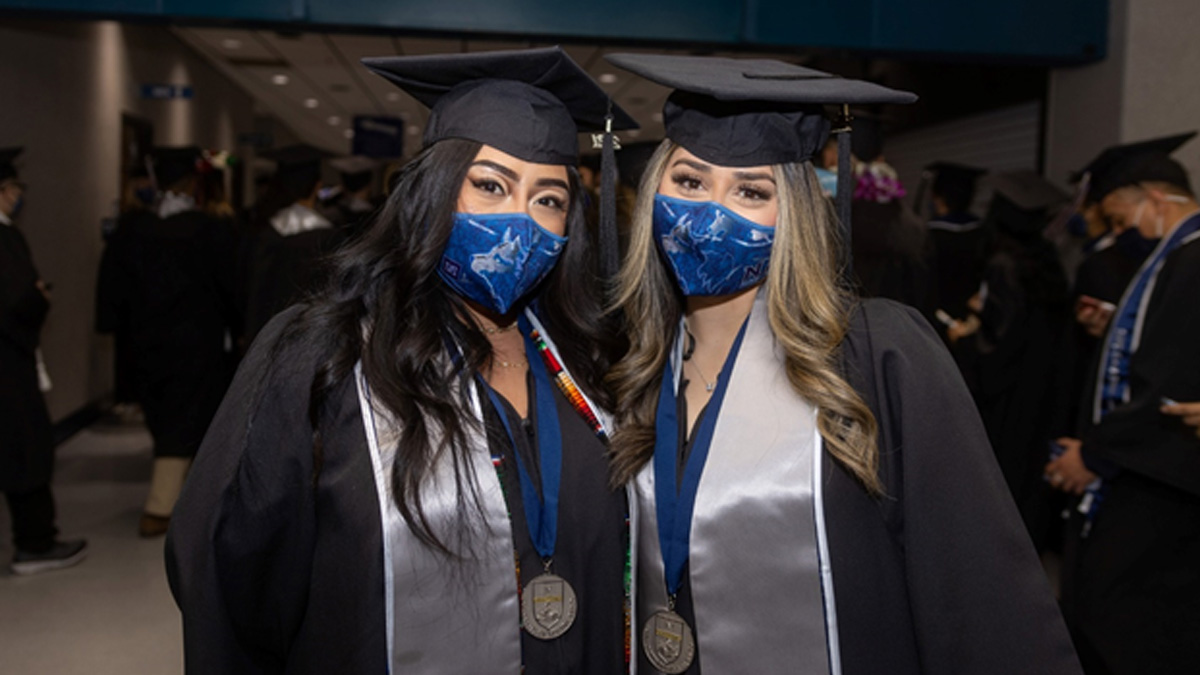
More than 1,900 degrees were awarded, including 94 from our College, during the two ceremonies.
Nearly 30 years ago, the University celebrated its first Winter Commencement ceremony at Lawlor Events Center because Spring Commencement had grown too large. History was made again this December at Lawlor, as two Winter Commencement ceremonies were held for the first time, again due to growth. More than 1,900 degrees were awarded, with 94 from our College.
94
GRADUATES
1
SUMMA CUM LAUDE
1
MAGNA CUM LAUDE
6
CUM LAUDE
18
AGRICULTURE, VETERINARY & RANGELAND SCIENCES MAJORS
19
BIOCHEMISTRY & MOLECULAR
BIOLOGY MAJORS
48
NATURAL RESOURCES & ENVIRONMENTAL SCIENCE MAJORS
9
NUTRITION MAJORS
Bringing hope and new paths to Nevada communities
“The world, with your accomplishment, just got a little more hopeful. With your graduation, the chances that problems will be solved, and new paths will be blazed, in all disciplines, in all workplaces and throughout all of our communities, will grow almost exponentially throughout our great state.” -Board of Regents Chair Carol Del Carlo
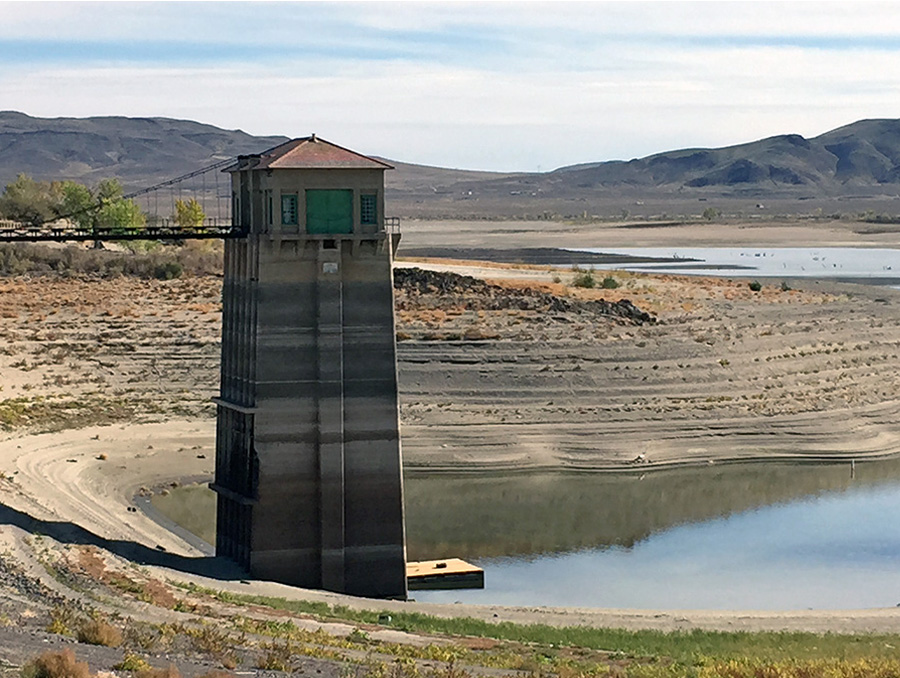
Interdisciplinary approach from Extension keeps people informed and involved
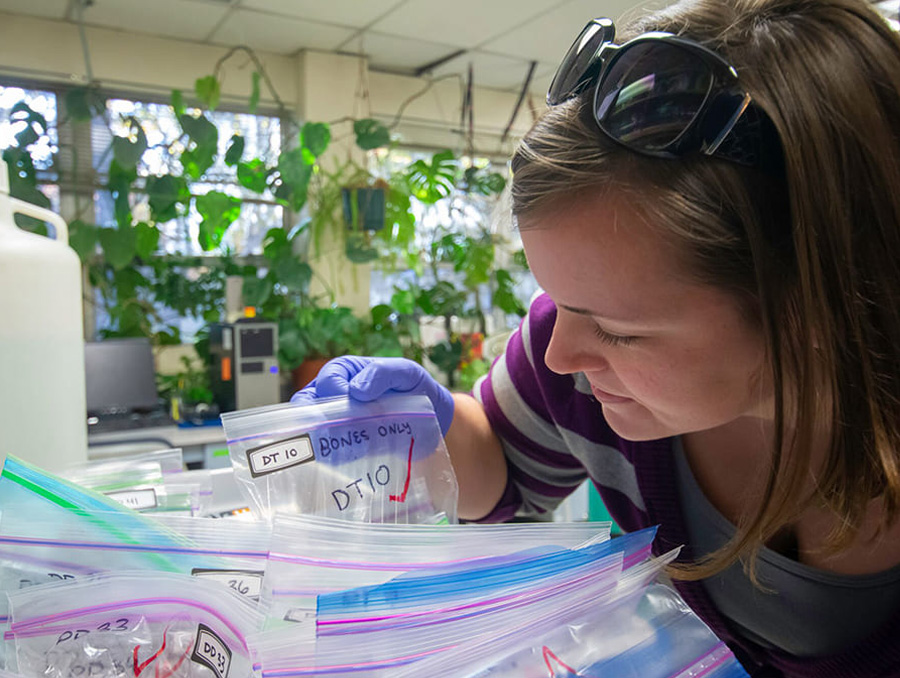
New study by University scientists also shows inaccurate ingredient labeling

Assistant Professor Steven Frese is conducting research on gut microbiomes
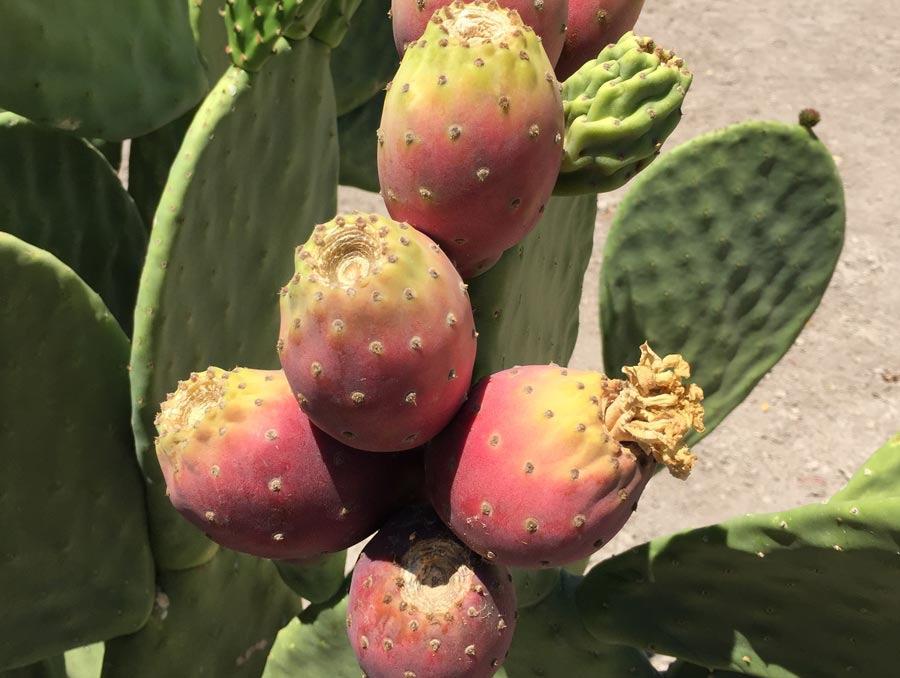
Cactus crops remove carbon from the atmosphere, provide biofuel, food and livestock feed
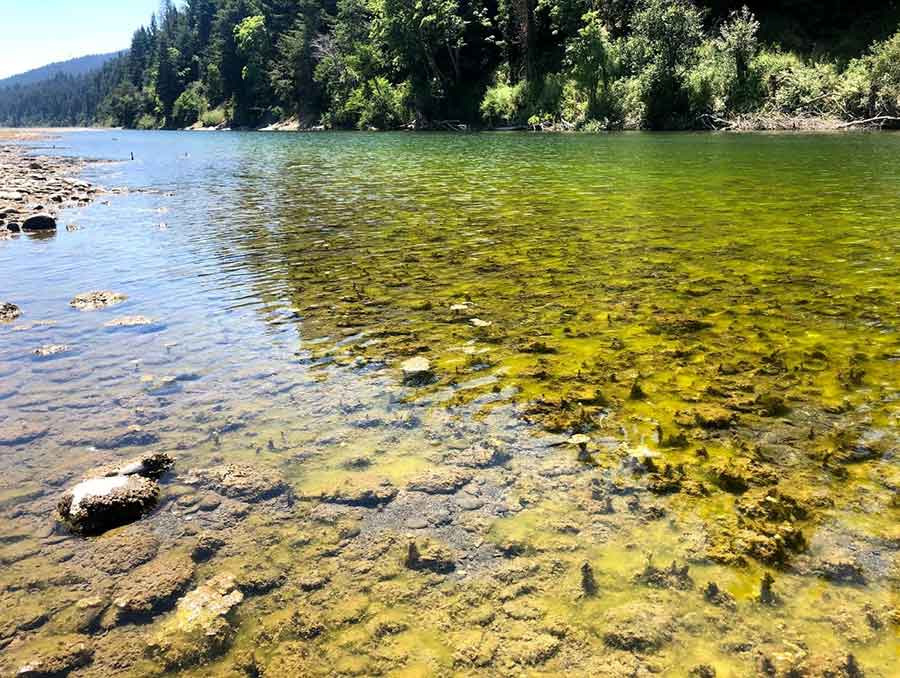
University researcher to create predictive models to better protect pets and humans
Jane Palmer

Thunderstorms are becoming less frequent in the U.S. Southwest thanks to climate change, causing the landscape to become even more arid. Photo by Raychel Sanner.
Climate change is hitting the American Southwest hard. For Native American tribes in the region, these changes are threatening their ability to live on the land in the way that they have done for hundreds, or even thousands, of years.
In response, many tribes have developed their own climate change adaptation initiatives, and to see how Western science could help, the U.S. Department of Agriculture funded the Native Waters on Arid Lands project. The goal was to partner researchers with tribal communities to collaboratively understand how climate change was affecting the region and to come up with possible paths to adaptation.
Helen Fillmore, an Extension researcher with the project and member of the Washoe Tribe, and her colleagues conducted two surveys to assess the type of information and data that would help Indigenous communities in their efforts to build climate resilience.
The surveys revealed surprising results:
“I think it’s shown that it’s always good to be humble and to ask questions first, before starting to pursue something that isn’t going to be needed or isn’t going to be relevant to the communities that you’re working with,” Fillmore said.
Washoe scientists discuss using traditional knowledge to mitigate wildfire risk, restore Tahoe’s Meeks Meadow
Members of the Washoe Tribe have embarked on a project to integrate use of their tribe’s traditional knowledge into current land management strategies to restore Tahoe’s Meeks Meadows, an area of cultural significance to the tribe.
The effort is called the MÁYALA WÁTA Restoration Project at Meeks Meadow, and is the subject of this Extension Living With Fire Program Podcast episode featuring Helen Fillmore, an Extension researcher and member of the Washoe Tribe.
Providing useful, accessible information
“Providing the most useful information and data and making them easily accessible supports tribal sovereignty, a critical factor when it comes to building resiliency to climate change.” –Extension Researcher Helen Fillmore

The University will host Cattlemen’s Update Jan. 10 – 14 virtually and at various locations. Photo by Robert Moore.
The University will host the annual Cattlemen’s Update in person and virtually in 2022, Jan. 10 – 14. For more than 40 years, the University has held several sessions across Nevada in January to provide ranchers with current research-based information about issues that may affect the efficiency, productivity, profitability and sustainability of their businesses and Nevada’s cattle industry.
The five-day event, offered virtually once and then at six locations across the state, is a partnership led by the College and its Extension and Experiment Station units. Other program partners include local sponsors and the U.S. Department of Agriculture.
Speakers for this year include State Veterinarian Amy Mitchell, animal reproductive physiology expert Carson Anderson Oney, Professor and Extension Educator for Humboldt County Brad Schultz, and Associate Professor of Rangeland Sciences and Extension Specialist Paul Meiman.
This year’s schedule includes:
The cost is $20 per ranch per location, which includes lunch or dinner, event proceedings and the “Red Book” recordkeeping guide for cattle producers.
Reaching ranchers with University research
“University faculty always look forward to making the rural tour to discuss livestock issues with Nevada ranchers and highlight current University research.” –Extension Educator for Mineral County Staci Emm, who coordinates the event
Students at Valley High School in Las Vegas will soon be offered additional programming before and after school to help those who may have fallen behind in credits needed or are looking for opportunities for engagement. The help will be provided by the 4-H Youth Development Program, thanks to a $120,000 grant from the 21st Century Community Learning Center Program from the Nevada Department of Education.
Beginning in January, Extension will base a 4-H site coordinator, Maria Chairez, at the high school. Chairez will develop and execute programming aimed at helping students catch up and enhancing educational outcomes in general, such as improving students’ grades and attendance, and reducing behavior and discipline issues at the school.
"We are really excited to partner with Extension’s 4-H Program on the 21st Century Community Learning Program,” Philip Marsh, Valley High School assistant principal, said. “Our students are eager to get involved, and the 4-H activities will give them more opportunity to do that.”
Chairez will be piloting the “4-H MAGIC Program.” The program, which stands for Mastery, Generosity, Independence and Community, uses six-week sessions that are designed to leverage student engagement, target academic intervention, and provide a diverse offering of enrichment opportunities to develop a community of out-of-school-time learners.
“We hope that this experience can be replicated at other high schools with similar needs,” Urban 4-H Youth Development Program Manager Nora Luna said.

Maria Chairez is the 4-H site coordinator at Valley High School, in charge of the school’s new 4-H programming.
Giving youth new opportunities for learning and growing
“I am excited to build a new program that taps into the interest, needs and talents of youth at Valley High School, while also addressing their needs to stay on track for high school graduation and beyond. Many fell behind or just need extra support, and the 21st Century after-school program will give youth new opportunities for learning and growing.” -4-H Site Coordinator Maria Chairez

Long-term radon test kits will be available at multiple locations in Nevada for Radon Action Month. Photo courtesy of the Nevada Radon Education Program.
Governor Sisolak has proclaimed January Radon Action Month in Nevada, and Extension is offering short- and long-term radon test kits so that homeowners can identify whether their homes have high levels of the cancer-causing gas and can take steps to mitigate risks. Radon test kits are available at Extension offices and partnering locations statewide for free in the months of January and February.
Radon is a naturally occurring, radioactive gas that is colorless, odorless and tasteless. It comes from the ground and can accumulate in homes, raising the risk of lung cancer. The U.S. Environmental Protection Agency estimates 21,000 Americans die each year from radon-caused lung cancer, killing more people than secondhand smoke, drunk driving and house fires.
The risk of radon-caused lung cancer can be reduced. A simple three-day test can determine if a house has a radon problem, and winter is the recommended time to test. If radon problems are found, they can be fixed. It is recommended to test homes every two years for radon risk.
Promoting the health and wellbeing of Nevadans
"It is important for the health and wellbeing of all Nevadans that one month each year should be set apart from the rest and be known as Radon Action Month in Nevada to support efforts to encourage all residents of the Silver State to test their homes for radon, mitigate elevated levels of radon, and have new homes built with radon-reducing materials and features." -The Governor’s Proclamation
Our teaching, research and engagement programs are intertwined and complement one another. Faculty who teach on campus also conduct research as part of our Experiment Station, allowing students to learn about and participate in research. Extension faculty engaging with communities identify research needs, as well as join Experiment Station faculty to conduct research. Faculty on campus help to develop Extension programs in communities.


